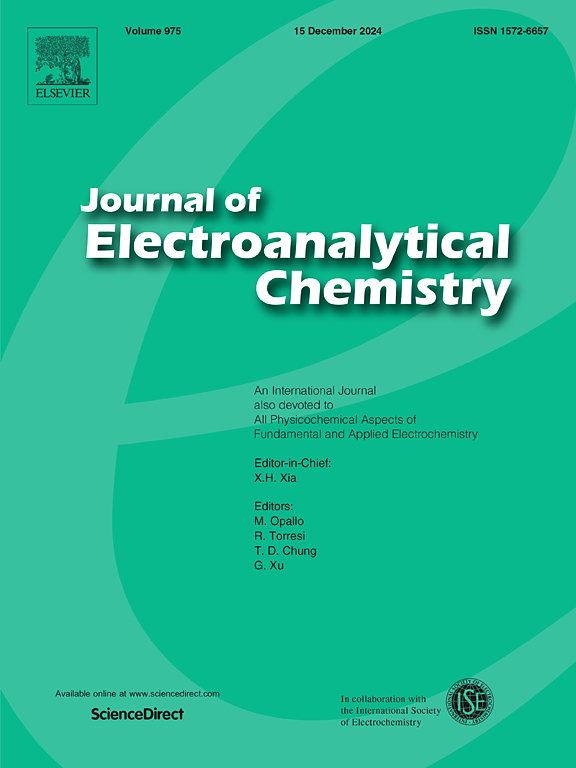Fabrication of Pt nanoparticles encapsulated by N, P co-doped carbon via solution plasma for the oxygen reduction reaction
IF 4.1
3区 化学
Q1 CHEMISTRY, ANALYTICAL
引用次数: 0
Abstract
The oxygen reduction reaction (ORR) remains a performance-limiting step in fuel cells due to sluggish kinetics and the high cost of platinum-based catalysts. In this study, we report the synthesis of nitrogen and phosphorus co-doped carbon (NPC) encapsulating Pt nanoparticles via a solution plasma process, aiming to reduce Pt usage while enhancing catalyst activity and durability. Structural characterization confirmed a core–shell morphology, with Pt cores uniformly embedded in a conductive, heteroatom-doped carbon shell. X-ray photoelectron spectroscopy revealed active nitrogen species (pyridinic and graphitic N) and P-doping contributing to electron redistribution and active site formation. Electrochemical tests in alkaline media demonstrated that the resulting NPC@Pt catalyst exhibits superior ORR activity, with a four-electron transfer pathway, higher limiting current density, and significantly improved long-term stability compared to commercial Pt/C. These findings highlight the synergy of heteroatom doping and core–shell structuring in advancing cost-effective, durable ORR electrocatalysts for alkaline fuel cells.
用溶液等离子体法制备N, P共掺杂碳包覆的Pt纳米颗粒用于氧还原反应
由于动力学缓慢和铂基催化剂的高成本,氧还原反应(ORR)仍然是燃料电池性能的限制步骤。在这项研究中,我们报道了通过溶液等离子体工艺合成氮磷共掺杂碳(NPC)封装Pt纳米颗粒,旨在减少Pt的使用,同时提高催化剂的活性和耐久性。结构表征证实了核壳形态,铂芯均匀地嵌入导电的杂原子掺杂碳壳中。x射线光电子能谱显示活性氮(吡啶氮和石墨氮)和p掺杂有助于电子重分布和活性位点的形成。在碱性介质中的电化学测试表明,NPC@Pt催化剂具有优越的ORR活性,具有四电子转移途径,更高的极限电流密度,与商用Pt/C相比,长期稳定性显著提高。这些发现强调了杂原子掺杂和核壳结构的协同作用,可以促进碱性燃料电池中成本效益高、耐用的ORR电催化剂。
本文章由计算机程序翻译,如有差异,请以英文原文为准。
求助全文
约1分钟内获得全文
求助全文
来源期刊
CiteScore
7.80
自引率
6.70%
发文量
912
审稿时长
2.4 months
期刊介绍:
The Journal of Electroanalytical Chemistry is the foremost international journal devoted to the interdisciplinary subject of electrochemistry in all its aspects, theoretical as well as applied.
Electrochemistry is a wide ranging area that is in a state of continuous evolution. Rather than compiling a long list of topics covered by the Journal, the editors would like to draw particular attention to the key issues of novelty, topicality and quality. Papers should present new and interesting electrochemical science in a way that is accessible to the reader. The presentation and discussion should be at a level that is consistent with the international status of the Journal. Reports describing the application of well-established techniques to problems that are essentially technical will not be accepted. Similarly, papers that report observations but fail to provide adequate interpretation will be rejected by the Editors. Papers dealing with technical electrochemistry should be submitted to other specialist journals unless the authors can show that their work provides substantially new insights into electrochemical processes.

 求助内容:
求助内容: 应助结果提醒方式:
应助结果提醒方式:


